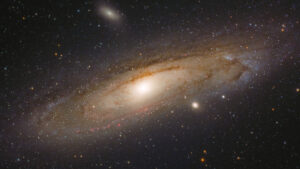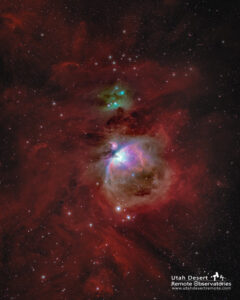The night sky is full of fascinating and beautiful targets that can imaged to create a scientifically accurate or beautifully interpreted fine art photo. While the universe seems infinite the choices actually boil down to just a couple considerations when choosing a target.
First is availability; many of the popular targets are seasonal and either only visible or in good positions during certain times of the year. For instance the Pleiades and the Orion Nebula region are primarily winter targets. Springtime is frequently referred to as “galaxy season” since the earth’s position is mostly facing away from the Milky Way galaxy at night in out into space where other galaxies are visible. As part of the Utah Desert Remote Observatories Imaging Experience we will work with you to help choose targets that are well positioned.
The apparent size of the target is another consideration. There are lots of beautiful nebulae that appear quite large in the night sky – much larger than the full moon. But there are also many targets that are quite small and need a telescope with more magnification to image properly. Planets are generally the smallest targets and need even larger telescopes and special imaging and processing techniques. We offer astro-imaging using our wide-field 530mm focal length Takahashi FSQ106 as well as narrow field imaging through a PlaneWave CDK 12.5. Again, we’re help you match the telescope to the target to ensure the best results.
The last choice has to do with the type of object. In very broad terms there are emission nebula and reflection nebula (see the blog post Types of Nebulae for more details). As the name implies, an emission nebula actually emits its own light. This occurs when radiation from a nearby bright star energizes or ionizes the gas causing it to glow much the same way a neon light glows. A reflection nebula on the other hand is light reflected from dust or other material. Knowing which type of target is being chosen guides us in how to approach imaging. While there are some notable exceptions, in general an emission nebula will be photographed using specific narrowband filters that capture just the light emitted by the gases present in the nebula. Narrowband images generally end up having a dominant red or cyan color balance depending on the gas and the color mapping. Galaxies and reflection nebulae are generally imaged using the full color spectrum of red, green and blue to create a natural color image.

When you sign up for the Utah Desert Remote Observatories Imaging Experience we’ll start with a Zoom consultation where we’ll discuss your ideas and goals. We can offer suggestions regarding targets and imaging choices to ensure you get the image you want.
Contact Utah Desert Remote Observatories to see about your own custom Imaging Experience


